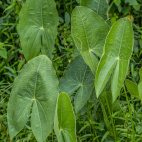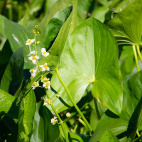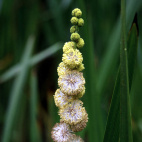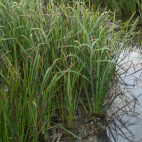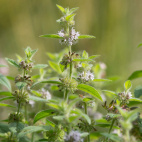Color
Availability
USDA Zone
Region
Type
Duration
Season
Germination
Soil
Sunlight
Height
Use
Narrow Your Search
Color
Availability
USDA Zone
Region
Type
Duration
Season
Germination
Soil
Sunlight
Height
Use
Wildflower Seeds - Northern Region
The Northern region is home to our Canadian friends in the eastern provinces, as well as the northern-most part of the Eastern US. This area is characterized by a long, cold winter with lots of snow, and a short humid summer that only lasts about 3 or 4 months. Most of the area is classified as a UDSA Growing Zone 4 or less, and the species that grow here have interesting ways to perpetuate themselves in spite of the short growing season. There are a lot of forests and wetlands in this region, so adequate moisture is hardly ever a problem. Look up your growing zone to make sure that the Northern wildflower seeds that you want to grow are winter hardy. Alternatively, just order annual flower seeds online so that the plant does not need to make it through the winter, but can reseed itself and come back from seed the next year.
-
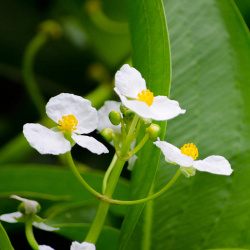 Common Arrowhead Seeds
Sagittaria latifolia
Native to ponds, streams, and marshes, this perennial is known by its arrowhead-shaped leaves and white three-petaled flowers. This plant is also known as Duck Potato because it grows tubers that the ducks like to eat.Quick View$3.48 Pkt - $36.00 / Oz
Common Arrowhead Seeds
Sagittaria latifolia
Native to ponds, streams, and marshes, this perennial is known by its arrowhead-shaped leaves and white three-petaled flowers. This plant is also known as Duck Potato because it grows tubers that the ducks like to eat.Quick View$3.48 Pkt - $36.00 / Oz -
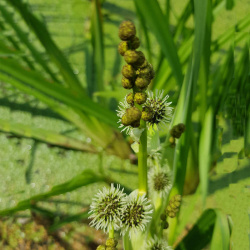 Great Bur Reed Seeds
Sparganium eurycarpum
Though it sometimes masquerades as just another grass, this wetland plant produces unusual globular white flowers that set it apart from the rest. This native plant also makes an excellent choice for dried flower arrangements.Quick Viewx
Great Bur Reed Seeds
Sparganium eurycarpum
Though it sometimes masquerades as just another grass, this wetland plant produces unusual globular white flowers that set it apart from the rest. This native plant also makes an excellent choice for dried flower arrangements.Quick ViewxGreat Bur Reed Seeds
Sparganium eurycarpum
Though it sometimes masquerades as just another grass, this wetland plant produces unusual globular white flowers that set it apart from the rest. This native plant also makes an excellent choice for dried flower arrangements.
$3.25 Pkt - $11.03 / Oz -
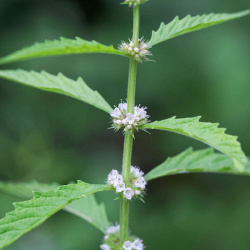 On Sale!
Water Horehound Seeds
Lycopus americanus
Though unrelated to the herb used in horehound candy, this non-aromatic plant is reputed to have medicinal properties, but caution is advised. This native wetland species belongs to the mint family and does not produce showy blooms.Quick Viewx
On Sale!
Water Horehound Seeds
Lycopus americanus
Though unrelated to the herb used in horehound candy, this non-aromatic plant is reputed to have medicinal properties, but caution is advised. This native wetland species belongs to the mint family and does not produce showy blooms.Quick ViewxWater Horehound Seeds
Lycopus americanus
Though unrelated to the herb used in horehound candy, this non-aromatic plant is reputed to have medicinal properties, but caution is advised. This native wetland species belongs to the mint family and does not produce showy blooms.
$3.75 Pkt - $12.65 / Oz -
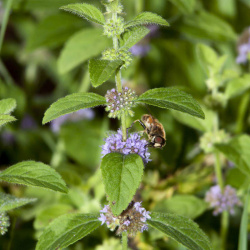 On Sale!
Wild Mint Seeds
Mentha arvensis
Containing a valuable essential oil, the leaves of this mint have numerous culinary and medicinal uses. This very minty perennial also bears small white to lavender flowers that always create a buzz among the honeybees.Quick View$3.75 Pkt - $120.00 / Oz
On Sale!
Wild Mint Seeds
Mentha arvensis
Containing a valuable essential oil, the leaves of this mint have numerous culinary and medicinal uses. This very minty perennial also bears small white to lavender flowers that always create a buzz among the honeybees.Quick View$3.75 Pkt - $120.00 / Oz
The Northern region is home to our Canadian friends in the eastern provinces, as well as the northern-most part of the Eastern US. This area is characterized by a long, cold winter with lots of snow, and a short humid summer that only lasts about 3 or 4 months. Most of the area is classified as a UDSA Growing Zone 4 or less, and the species that grow here have interesting ways to perpetuate themselves in spite of the short growing season. There are a lot of forests and wetlands in this region, so adequate moisture is hardly ever a problem. Look up your growing zone to make sure that the Northern wildflower seeds that you want to grow are winter hardy. Alternatively, just order annual flower seeds online so that the plant does not need to make it through the winter, but can reseed itself and come back from seed the next year.







